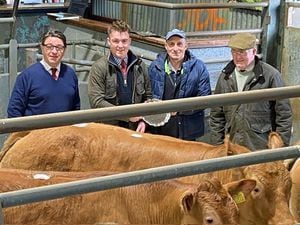Focus on fibre digestibility to boost milk production
Dairy farmers are being encouraged to take steps to maximise rumen health in their herd and boost milk production from fibre this season.

It comes against the backdrop of variable grass silage quality, high feed prices and warnings of increased mycotoxin risk in maize silage this season.
Ruminants have a unique ability to release a significant amount of energy from the fibre fraction of forage.
But harnessing this energy potential depends on both the quality of the forage and the fibre digestion process within the rumen.
Although it is too late to influence the quality of forage available for feeding this winter, farmers can lift production from forage by taking steps to boost the degradability of fibre within the rumen.
Getting fibre digestion in the rumen right is really important because this leads to higher milk production, and more fertile and healthier animals.
Research has shown that for every five per cent increase in neutral detergent fibre (NDF) digestibility within the rumen, a cow will increase her dry matter intake (DMI) by 0.63kg per day, resulting in a 0.9kg increase in the amount of fat corrected milk (FCM) she produces every day.
The physiological status of a cow – such as the temperature of her environment, stocking density and access to feed and water – can have a big impact on the digestion of fibre within the rumen.
However, how and what a cow is fed is the biggest contributor to how efficiently the rumen breaks down valuable fibre, so working closely with your nutritionist and/or feed advisor to maximise this is worthwhile.
I recommend the inclusion of a rumen-specific live yeast into rations to maximise rumen function and fibre utilisation.
Feeding a rumen-specific live yeast, such as Levucell SC, is designed to enhance the establishment of beneficial rumen microbes, balance the rumen environment, and improve rumen fermentation conditions.
This helps stabilise rumen pH, reducing the risk of acidosis, and significantly improves fibre degradability within the rumen compartment.
Other tips for boosting fibre digestion include: time fresh feed provision between milking times and not straight after to stimulate a more spread out feeding pattern and ensure there is always feed available by pushing-up feed every two hours. Also, avoid overcrowding by ensuring cows have a barrier space of 1m per cow during the dry period and at least 75cm per cow in the fresh group.
Mark McFarland is Lallemand Animal Nutrition’s product manager





